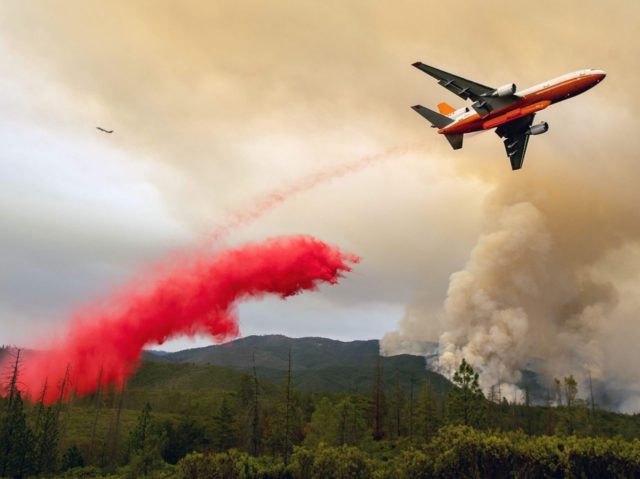Cal Fire investigators revealed on Friday that July’s 96,901-acre Ferguson Fire near Yosemite National Park was started by a super-heated catalytic converter.
The California Department of Forestry (Cal Fire) determined that Ferguson Fire — which killed two firefighters, injured another nineteen, and destroyed 10 buildings as it burned through the Sierra National Forest, Stanislaus National Forest, and into Yosemite National Park — was caused by a by faulty catalytic converter in an auto exhaust system that could have heated up to between 1,200 to 1,600 degrees Fahrenheit, according to a report by Wildfire Today.
Investigators have not been able to identify the specific vehicle, but the fire was started on July 13 by a car parked in dry grass at about 8:30 p.m. along an eastbound stretch of Highway 140 near the Savage Trading Post. Two air tankers, hundreds of fire engines, and 3,400 firefighters fought the blaze for 40 days in some of the most rugged areas of Mariposa County.
Cal Fire considers faulty catalytic converters one of the top ten causes of forest fires. The problem is usually due to spark plugs not burning fuel properly, which causes an exhaust system’s catalytic converter to work harder to prevent discharge.
Most catalytic converter problems do not prevent vehicles from continuing to operate, unless the pollution control device is completely clogged. But if partially clogged, catalytic converter temperatures can spike higher. The heat on the floor boards can penetrate through heat shields and metal floors to ignite cabin insulation and carpeting. A super-heated exhaust system can also start forest fires.

COMMENTS
Please let us know if you're having issues with commenting.